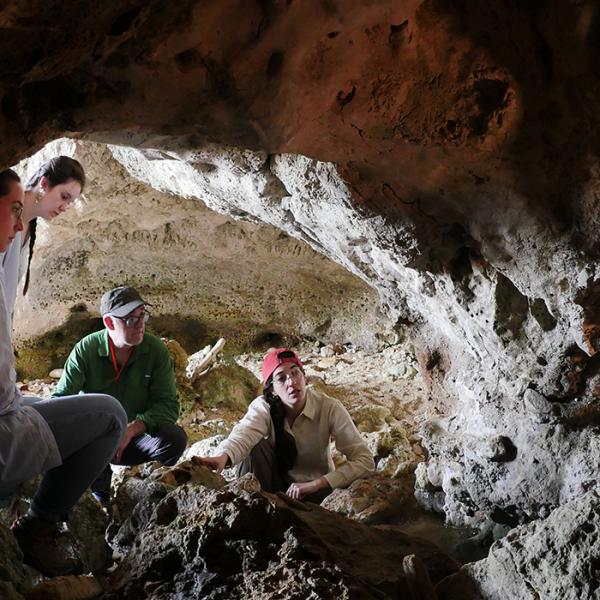Michael Storozum
Geoscientists argue that around 250 years ago humans entered the Anthropocene – a new geological epoch when human action overprints the natural functioning of the atmosphere, biosphere, hydrosphere, and lithosphere, with a distinctly anthropogenic signature. Archaeologists dispute the late Anthropocene argument, arguing that humans entered the Anthropocene when they domesticated plants and animals around the beginning of the Holocene. But in between these two temporal extremes there is a great deal of complexity and variability within the archaeological record. Many areas, traditionally considered "hearths of civilization," may contain useful data to address questions of when, how, and where the Anthropocene "began." By answering these questions basic questions, I aim to get a better perspective on why humans have interacted with their environments in the ways that they have. My dissertation research is focused on answering Anthropocene questions, exploring the origins of intensive land use and the resultant environmental impacts.

Rather than use the artefactual record, I use geological proxy data contained within paleosols to answer my dissertation question. Geoarchaeologists argue that paleosols, otherwise known as buried soils, are one of the most geographically widespread and well-preserved records of ancient land use practices outside of archaeological sites, but few studies in East Asia have explored paleosols as a record of ancient land use. My recent discoveries in Neihuang County, Henan, China, have revealed a spatially continuous and exceptionally preserved sequence of nine paleosols that date to the Early (12000 cal. B.P. to 8200 cal. B.P.), Middle (8200 cal. B.P. to 4200 cal. B.P.), and Late Holocene (4200 cal. B.P. to Present), documenting both natural and anthropogenic paleoenvironmental conditions. The preservation of paleosols in Neihuang County is exceptional because Yellow River floods quickly sealed each paleosol within at least one meter of sediment, protecting them from post-depositional alteration. Some paleosols appear to have formed without human influence, while others contain archaeological deposits such as fields, levees, canals, and roads. Together with my colleagues, I have identified over thirty locations in a 50 km2 area that have this sequence of paleosols spanning the entire Holocene. The exceptional time coverage, preservation, and widespread geographic distribution of this paleosol sequence provides an unparalleled opportunity to explicate local land use histories and better understand the onset and development of the Anthropocene in China.
I am applying a contextual geoarchaeological approach to identify anthropogenic signatures of land use at Anshang and Sanyangzhuang, two of the best preserved paleosol sequences in Neihuang County. Contextual geoarchaeology is a multi-scalar and multi-proxy approach to the pedo-archaeological record that enhances the interpretive power of geoarchaeological data. Methods I am using include soil micromorphology, microprobe analysis, geochemical analysis, particle size analysis, loss-on-ignition, and magnetic susceptibility. Because paleosols are polygenetic, a contextual approach is necessary to disentangle geogenic and biogenic factors of natural soil formation from anthropogenic signatures of past land use. Once I have identified these anthropogenic signatures of land use, I will use my data to contribute to key arguments about the origins and development of the Anthropocene.
Rather than focus on an archaeological site, my dissertation research will demonstrate that paleosols in Neihuang County, Henan, China, sequester anthropogenic signatures of land use practices possibly as early as the Neolithic. Since few archaeologists have viewed the paleosol record as an artifact of ancient land use in China, this pedo-archaeological approach will provide a fresh perspective on the way people used, and therefore perceived, their land resources in the past. Additionally, the diachronic sequence of paleosols in Neihuang County is one of the only records in the world to document the influence of people’s land use practices on natural soil formation from the beginning of the Holocene. The data extracted from the paleosol record in Neihuang County will not only explicate local changes in land use practice but will also contribute to understanding the onset and development of the Anthropocene. This study will expand Chinese archaeology beyond the confines of history or prehistory to embrace a diachronic environmental and geoarchaeological perspective, linking together global and local datasets about land use histories in the Anthropocene. In sum, my dissertation research will explicate local continuity and change in land use practices in the study area and assess how paleosols record the onset and development of the Anthropocene.


